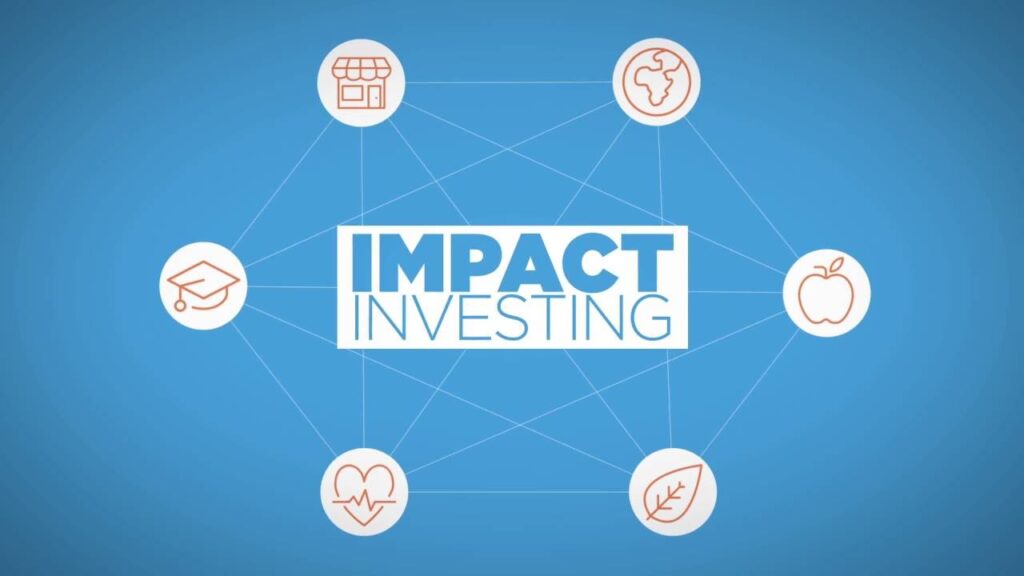Impact Investing: Combining Profit with Social and Environmental Goals
In recent years, there has been a growing recognition that investments can go beyond merely generating financial returns. Impact investing, also known as socially responsible investing (SRI) or sustainable investing, has emerged as a powerful force that seeks to create a positive impact on society and the environment while still generating financial gains. This innovative approach to investment has gained traction among individuals, institutions, and corporations alike, as they seek to align their financial goals with their values and contribute to a more sustainable and equitable world. In this comprehensive exploration, we will delve into the concept of impact investing, its underlying principles, the various strategies employed, and its potential to shape a better future for humanity and the planet.
Socially Responsible Investing Explained
Socially responsible investing, at its core, is an investment strategy that considers both financial returns and the broader impact of investments on society. Traditional investment approaches may prioritize short-term profits at the expense of ethical and social considerations. In contrast, socially responsible investing seeks to make a positive change by directing capital towards companies and projects that demonstrate responsible and ethical practices. This can include investing in businesses that promote diversity and inclusion, uphold human rights, and maintain high standards of corporate governance.
A. The Evolution of Socially Responsible Investing
Socially responsible investing has come a long way since its inception in the 18th century when religious groups abstained from investing in companies involved in alcohol, tobacco, or gambling. Over time, it has evolved to encompass a wide array of environmental, social, and governance (ESG) factors. The modern SRI movement gained momentum in the 1960s and 1970s, driven by concerns over civil rights, environmental pollution, and the Vietnam War.
B. Embracing ESG Principles
Environmental, social, and governance (ESG) criteria are the bedrock of socially responsible investing. Investors employing this strategy analyze a company’s performance based on ESG factors before making investment decisions. Environmental criteria assess a company’s impact on the planet, such as its carbon footprint, water usage, and waste management. Social criteria focus on a company’s relationships with employees, customers, and the communities it operates in, looking at aspects like labor practices and community engagement. Governance criteria, on the other hand, evaluate a company’s internal policies, board diversity, and transparency. By incorporating ESG principles, socially responsible investors can drive positive change and influence corporate behavior.
C. The Role of Shareholder Activism
One potent tool in the arsenal of socially responsible investors is shareholder activism. Shareholder activists use their ownership stakes in companies to advocate for positive changes on environmental and social issues. They may file resolutions, engage in dialogues with company management, and collaborate with other investors to influence corporate policies and practices positively. Shareholder activism has proven successful in pressing companies to take concrete actions on climate change, diversity, and other critical issues.

Environmental and Sustainability Investments
As climate change, resource depletion, and environmental degradation loom as existential threats, environmental and sustainability investments have gained prominence in the impact investing landscape. This segment of impact investing seeks to channel capital into projects and initiatives that promote environmental conservation, renewable energy, and sustainable resource management.
A. Investing in Renewable Energy
Renewable energy sources, such as solar, wind, hydro, and geothermal, have emerged as viable alternatives to fossil fuels. Investing in renewable energy projects not only supports the transition to a low-carbon economy but also reduces greenhouse gas emissions and mitigates climate change impacts. As technology improves and economies of scale are achieved, renewable energy investments become increasingly attractive from both financial and environmental perspectives.
B. Sustainable Agriculture and Food Security
The global population continues to grow, exerting pressure on agricultural resources and food systems. Sustainable agriculture investments focus on promoting farming practices that maintain soil health, conserve water, and minimize the use of harmful chemicals. Additionally, impact investors may support companies that address food security challenges by improving access to nutritious food in underserved regions.
C. Conservation and Biodiversity Initiatives
Preserving biodiversity and protecting natural habitats are vital to maintaining ecosystem balance and resilience. Impact investors have an opportunity to support conservation efforts, such as the creation of protected areas, wildlife corridors, and initiatives to combat illegal poaching and deforestation. Investments in these areas contribute not only to environmental protection but also to the promotion of ecotourism and sustainable livelihoods for local communities.
Strategies for Impact Investing
Impact investing offers a spectrum of strategies for individuals and institutions seeking to create positive change through their investments. Each strategy is tailored to address specific social and environmental challenges while still aiming for financial returns.
A. Screening and Exclusion
One of the simplest forms of impact investing is negative screening, where investors exclude companies or industries that conflict with their values. For instance, investors may choose to avoid companies involved in tobacco, weapons manufacturing, or those with poor ESG practices. Exclusionary strategies align investment portfolios with the investor’s ethical principles and promote responsible corporate behavior.
B. Best-in-Class and Positive Screening
In contrast to negative screening, best-in-class or positive screening involves selecting companies that outperform their peers in terms of ESG performance. Investors identify industry leaders in sustainable practices, social responsibility, and governance and allocate capital to support their initiatives. This strategy incentivizes companies to improve their sustainability efforts to attract more impact investment.
C. Thematic Investing
Thematic investing revolves around supporting specific themes or causes that align with an investor’s values. Themes may include clean energy, gender equality, education, healthcare, and more. By concentrating on specific issues, impact investors can direct capital to areas where they believe they can create a significant positive impact.
D. Community Investments
Community investments target underserved communities and economically disadvantaged regions. These investments aim to promote economic development, create jobs, and improve access to essential services like education, healthcare, and affordable housing. Community development finance institutions (CDFIs) and microfinance institutions are examples of entities that facilitate such investments.
E. Blended Finance
Blended finance combines public and private capital to address global challenges effectively. Public institutions, like development banks or foundations, provide concessional capital to de-risk investments and attract private investors. This collaboration maximizes the impact of limited public funds and mobilizes additional resources to tackle complex problems, such as climate change and poverty.

The Potential and Future of Impact Investing
Impact investing has the potential to shape a more sustainable and equitable future by harnessing the power of capital to drive positive change. As the global community grapples with pressing challenges like climate change, social inequality, and resource scarcity, impact investing offers a viable pathway for individuals, institutions, and corporations to play a significant role in solving these issues.
A. Attracting Mainstream Investors
In the early stages, impact investing was perceived by some as a niche investment strategy primarily pursued by ethically-minded investors. However, as the world becomes more conscious of sustainability issues and the interconnectedness of global challenges, impact investing has gained traction among mainstream investors. The integration of ESG considerations into traditional investment practices is evidence of this shift, as more investors recognize the value of considering non-financial factors in their decision-making processes.
B. Measuring Impact and Returns
One of the challenges facing impact investing is measuring the actual impact of investments accurately. Traditional financial metrics may not fully capture the social and environmental outcomes generated by these investments. Developing standardized impact measurement frameworks will be crucial to assess the success and effectiveness of impact investments. Simultaneously, investors need to balance the pursuit of social and environmental goals with the imperative to achieve financial returns to attract sustained interest and growth in the sector.
C. Regulatory Support and Policy Incentives
Government support and policy incentives can be instrumental in advancing impact investing. Policymakers can create an enabling environment by offering tax incentives, subsidies, or grants to encourage impact investments. Additionally, implementing regulations that require companies to disclose their ESG performance can enhance transparency and promote responsible corporate behavior.
Conclusion
Impact investing represents a paradigm shift in the world of finance, transcending the traditional notion that profitability and positive social and environmental outcomes are mutually exclusive. By embracing socially responsible investing and directing capital towards projects that align with our values, we have the power to address global challenges and build a more sustainable and inclusive world. As impact investing continues to grow and evolve, it will undoubtedly play a pivotal role in shaping the future of finance and humanity alike.








